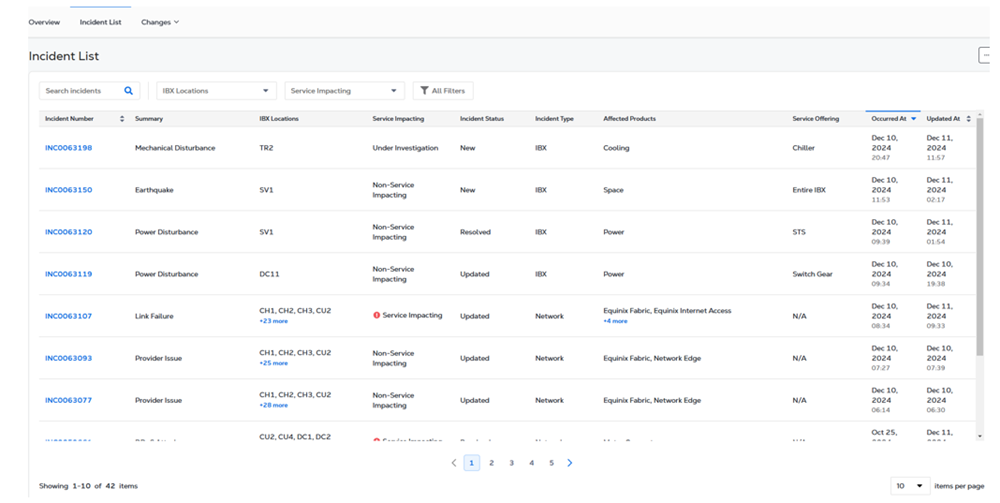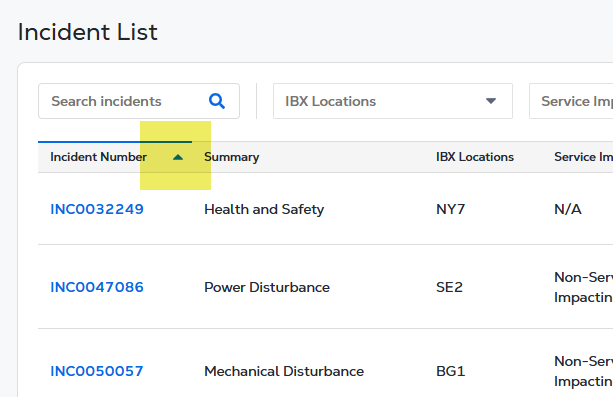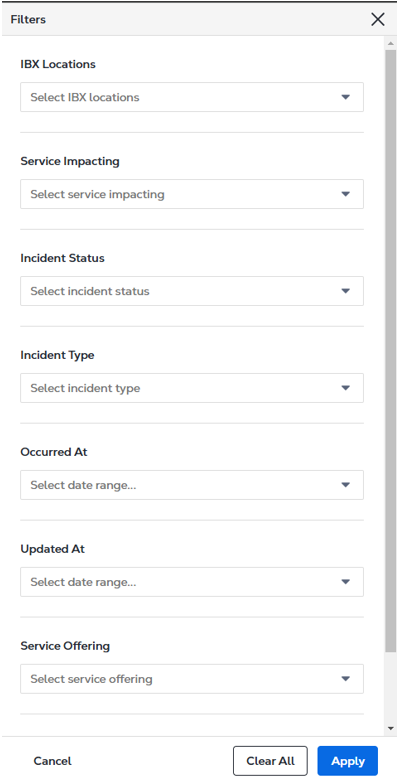Incident List
The Incident List tab includes the following information for each incident.

- Incident Number - A unique ID for the issue.
- Summary - A brief description of the issue.
- IBX Locations - The affected data center sites.
- Service Impacting - Whether Equinix-delivered services are/were impacted by the incident (Yes or No).
- Incident Status - The current status of the issue (New, Updated, or Resolved)
- Incident Type - The category of the issue (IBX or Network).
- Affected Products - Such as Equinix Connect, Internet Exchange, Metro Connect, Colocation, Equinix Precision Time, etc.
- Service Offering - (IBX incidents only) The asset types are: AC Circuit, ATS, Cabinet, Cage, Cooling Zone, DC Circuit, DC Plant, Floor, Network Cable Connection, Patch Panel / Media Converter Chassis, PDU / RPP, Phase, Room, STS, Switch Gear, Transformer, UPSH, UPSR, UPSS.
- Occurred At - The date/time the incident occurred.
- Updated At - he date/time of the last update for this issue.
Sorting the List
You can sort the list by any column. The currently sorted column is indicated by a blue arrow. To sort by a different column, click the up/down arrows for that column. You can click again to toggle between ascending and descending order.

Searching the List
Use the Search incidents box to search all the columns for a word or string.

Tip: You can search using full or partial words. Search terms are not case-sensitive.
Filtering the List
You can quickly filter the list using these options at the top:
- IBX Locations – Select one or more sites.
- Service Impacting – Select Yes or No.
Or click All Filters for more options.

Choose your filters and click Apply.
Exporting the List
To retain a copy for your records, you can save the list to a CSV file. You can open the export file in programs such as Microsoft Excel or Google Sheets, where you can perform other actions on the data (sort, filter, hide rows/columns, create charts, etc.).
-
Use the filters and/or search box to select the incidents you want to export. If you don't refine the list, the entire list is exported.
-
Click Export CSV to download the file to your computer or device.